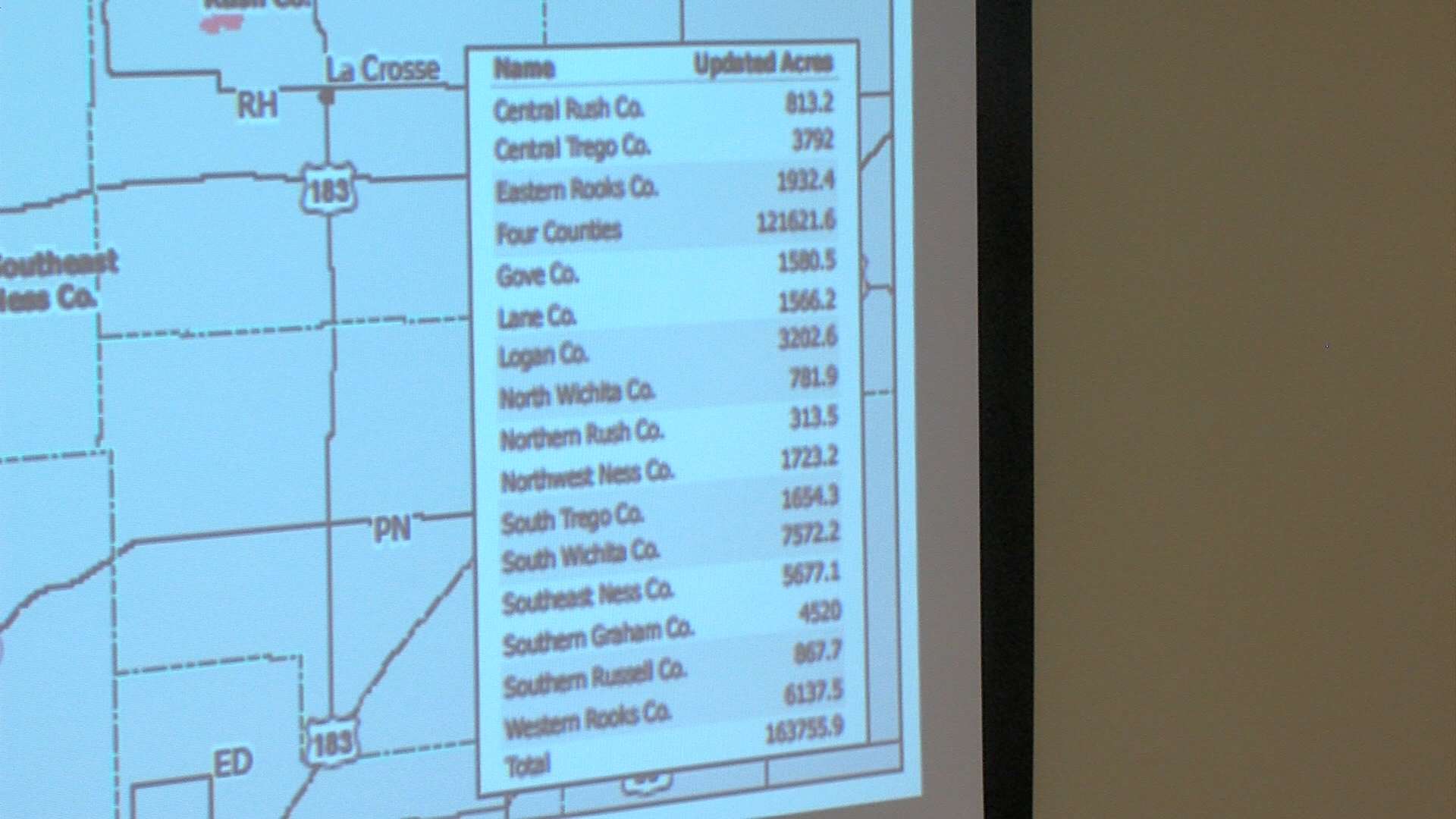
By BECKY KISER
Hays Post
There was no stopping the multiple wildfires that started racing east across Ellis County last month and burned for three days.
"Even with all 19 of our trucks, with the wind blowing 100 miles an hour, we couldn't put it out," said Darin Myers, Ellis County Rural Fire Chief.
An after action review of the wildland fires that burned in Ellis County Dec. 15-17 was presented Tuesday night. Among those attending were county commissioners, public works director, sheriff, assistant director for fire and emergency management, several of the county's 88 volunteer firefighters, and at least one rural resident.
Myers, along with other county emergency services personnel, talked about what went well with the local response, what can be improved, and reviewed the resources used.
The Ellis County 17 wildfires covered 74 square miles, burning 46,720 acres. The fires' perimeter was more than 57 miles.
Myers described the rural landscape as "disintegrated. In some places, it looks like sand dunes of fine dust."
"We could have doubled all our resources - people, trucks, water - and it would not have been enough."
One man died when he drove out of Hays into the smoke, became disoriented and ultimately landed in a ravine as he was overcome by the smoke and fire.
There were no public safety injuries and just one fire engine was damaged.


Fires, most likely started by power lines according to the state fire marshal, were reported in 11 area counties, burning a total of nearly 164,000 acres.
In Ellis County, the challenges included 100 mph winds, rough terrain, near zero visibility due to the smoke, long distances between fires, and multiple related incidents requiring the response of emergency medical services, fire trucks, rescue units, and law enforcement.
The Saline River bridge, six miles east of Highway 183, is closed for repair and the northeast part of the county does not have roads at every mile line.
"Getting from one side of the fire to the other took a lot longer," Myers said.
Three bridges were completely burned in the fire.
Downed power lines and multiple burned poles also caused widespread power outages, including at the emergency dispatch center in Hays.
Communication - with the public, people who had to be evacuated from their homes, between the five other county fire departments providing mutual aid, and public safety radio traffic - was also a challenge.
"In any disaster, communications is the one thing that can always be improved. ... We're fortunate in Ellis County that we have a good [emergency] radio system."

Ten homes, two of them unoccupied, were destroyed along with 16 other structures. The county is asking residents to report any affected structures not on the list. Fire reports will be created for each incident.
The destroyed structures list has been shared with the treasurer's department, whose employees are inspecting the properties to qualify for tax abatements in 2021 and 2022.
John Holub, president of the Hays Board of Realtors, discussed the local group's work with the National Association of Realtors® relief fund to provide financial assistance to homeowners who were displaced by the fire.
Manpower resources utilized by Ellis County to fight the blaze included all six fire companies, EMS, public works, and sheriff department, along with mutual aid from rural fire companies in Rooks, Ness, Russell, Osborne and Phillips counties.
Ellis County firefighters, most of whom work full-time jobs, were on the scene for a collective 1,700 hours over the three days.
Also assisting were the Kansas Highway Patrol, Kansas Forestry Service, Kansas Dept. of Emergency Management, Midwest Energy, Midland Marketing, CG Oil, American Red Cross, contract airplanes that dumped water on the flames, and landowners helping disc pastures to create back burning.

Myers talked about many things that were done well during the event.
He had high praise for the emergency communications department, which handled 153 911 calls between 3 p.m. and 5 p.m. as the fire began spreading.
The incident command system implemented about five years ago kept fire crews working within their divisions in either the east or west side of the county, instead of moving into an area already covered.

The after action review concluded with discussion of what can be done better during a similar disaster.
At the top of the list was communications, as is expected Myers said.
"We're always going to have [mutual aid] departments and private operators of water and farm implements that are not able to operate on our radios."
Even communications between county departments can be misunderstood. Law enforcement uses 10 code; rural fire does not.

Myers also pointed out the difficulty of establishing a water supply.
"You can't keep it one place. The fire moved 17 miles within a couple hours. You have to constantly move that."
Two new projects by the county will rectify some of the concerns brought up by Myers.
The rural fire department has received a grant for a water supply trailer and new pickup to pull it.
Ellis County is working on a new computerized system that places electronic markers on the maps which will move anytime an incident location changes.
Ellis County Commission Chairman Butch Schlyer issued a local disaster declaration at 8 p.m. Dec. 15. This will help local emergency departments and landowners with funding that could be available.






